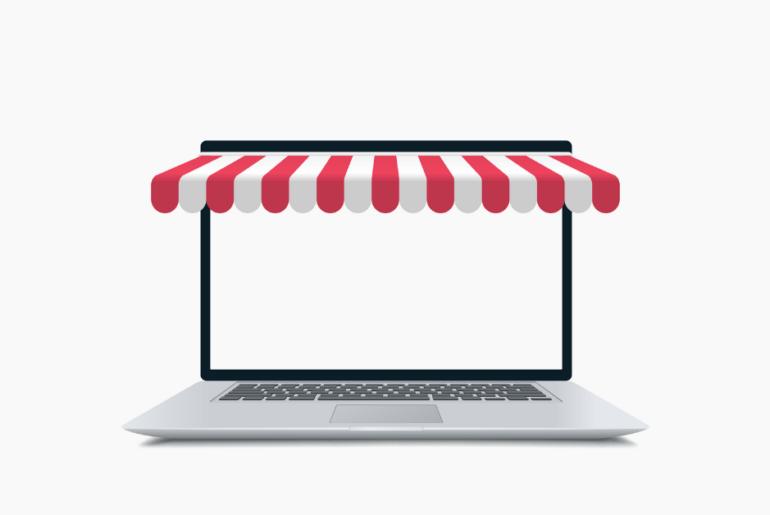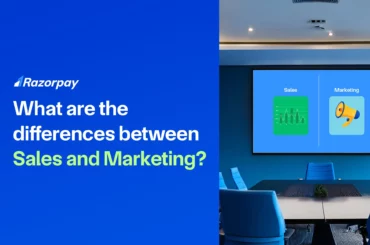E-commerce and online stores are the new faces of the business world. Today, almost everything has gone digital, from groceries to electronics and medicines to automobiles. The pandemic has also caused brick-and-mortar stores to shift to the online business model. While many online income streams are available, starting an online store is now one of the most desirable options for product-based small and medium enterprises.
If you want to win a global customer share while increasing profits, starting an online business is a great idea. This blog shares a step-by-step roadmap to creating an online store, even with zero inventory and no experience.
How to start an online store?
The first step is usually the most challenging step for anything. That applies to starting an e-commerce store, too, because most people don’t know where to start. Here are four simple steps you can follow to start your online store:
1. Choose your online store platform
The first and foremost step is choosing between starting on an e-commerce website or selling at a third-party marketplace.
If you choose to sell out of a marketplace, it is best to sell products that draw more traffic. On the other hand, selling on your e-commerce store allows you to experiment with different products.
|
Property |
Marketplace |
Own E-commerce Website |
|
Investment |
The initial investment is meager | Needs more money to pay for hostings, domains, design, development, and management of the website |
| Brand Awareness | Gaining your customers’ trust is easier. Choose trusted marketplaces like Amazon to sell | You will need to spend a considerable amount of time building brand awareness and earning customers’ trust |
| Branding | Marketplaces may not be for you if you wish to build a memorable brand since a lot hinges on the reliability of the marketplace. Simply put, new consumers make their decisions based on how the market, as a whole, reacts to and reviews your products | Starting your online store is the best option if you want customer acquisition and loyalty. Your store allows the consumers to connect with you personally and helps brands recall |
| Insights | The marketplaces control their SEO. So while it saves you from spending on search engine optimization, it limits your insights. In the digital world, insights are the new currency, allowing us to make better decisions | Having your online store gives you complete control over the insights, allowing for better decisions and conversion optimization |
2. Selling vs. dropshipping your products
After choosing the platform for your store, the next big decision is whether you want to sell or dropship your products. There are multiple factors to consider while selecting either choice.
|
Creating brand products |
Dropshipping |
|
Suppose you already have a product-based small business and a functional operating line. In that case, you can add that product to the store by simply tweaking it according to market trends However, if you don’t have any products, you have to do everything from scratch, from getting raw materials to getting the product ready, alongside labor |
Dropshipping is an online retail business model where the seller takes only orders on their online platform. As a result, they don’t need to maintain any inventory. Instead, they have tie-ups with companies that create and fulfill the order on behalf of the seller |
| It provides a better customer experience | Third-party errors can affect your brand’s reputation |
| It needs a considerable investment and has a high degree of risk | It needs money only for creating the online store and has lower risks than creating your products |
| Easy to manage and operate remotely | It requires more work and efficient management |
| You will need space to keep your inventory and manage the fulfillment procedure |
The best part of dropshipping is that you do not need to keep an inventory |
If you have a cash outlay capacity and want to do great business with loyal customers, creating your products is a great option. However, if you are a total beginner and want to start with minimal investment, start with dropshipping.
3. Select profitable products
After selecting your online store platform and deciding how to fulfill orders, the next step is choosing the products to sell.
You can sell anything: from services to high-ticket products to B2B supplies in an online store. Of course, this step is not for you if you are starting your online store to expand your existing business. But if you are starting from scratch, it is wise to go for the most profitable products.
If a product is profitable, it:
- Is in demand throughout the year
- Has low shipping costs
Also read: How to create an online store in India?
How to select a profitable product?
- Every business starts with research. Once you list products that fall under this category, narrow it down to the most profitable products.
- To do this, visit amazon.com and check the list of bestsellers. Exclude anything in your inventory that does not fall under the Amazon bestseller list.
- Repeat the above step with the eBay bestseller list and Alibaba bestsellers list.
- The products in the final list are all-time bestsellers. Now you can choose the products you want to sell.
- After finalizing the product, find the merchant that sells that product at the lowest rate.
4. Creating your online store
Now that you know what products you will sell and where and how you will be selling them, the next step is to create your online store. It is easy if you want to sell in marketplaces. All you need to do is upload your products and automate everything else.
If you are making your online store, choose an online shop builder that you can maintain easily. Shopify, WooCommerce, Wix, Weebly, BigCommerce, and Squarespace are the most popular online shop builders.
Here is a comparison chart of the most famous online store builders:
|
Online Store Builder |
Notable Features |
Pricing |
|
Shopify |
|
It starts at $29 per month. |
| BigCommerce |
|
It starts at $29.95 per month |
| WooCommerce |
|
Free to download, but you need WordPress hosting |



